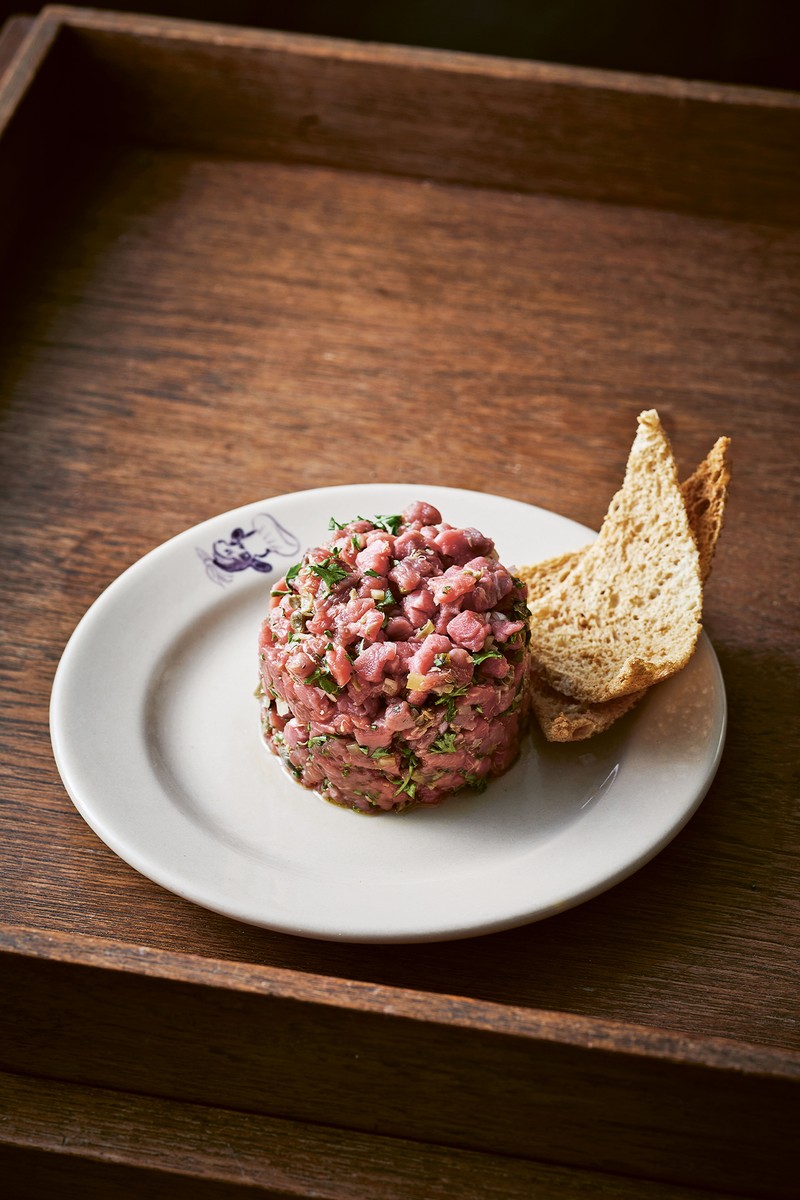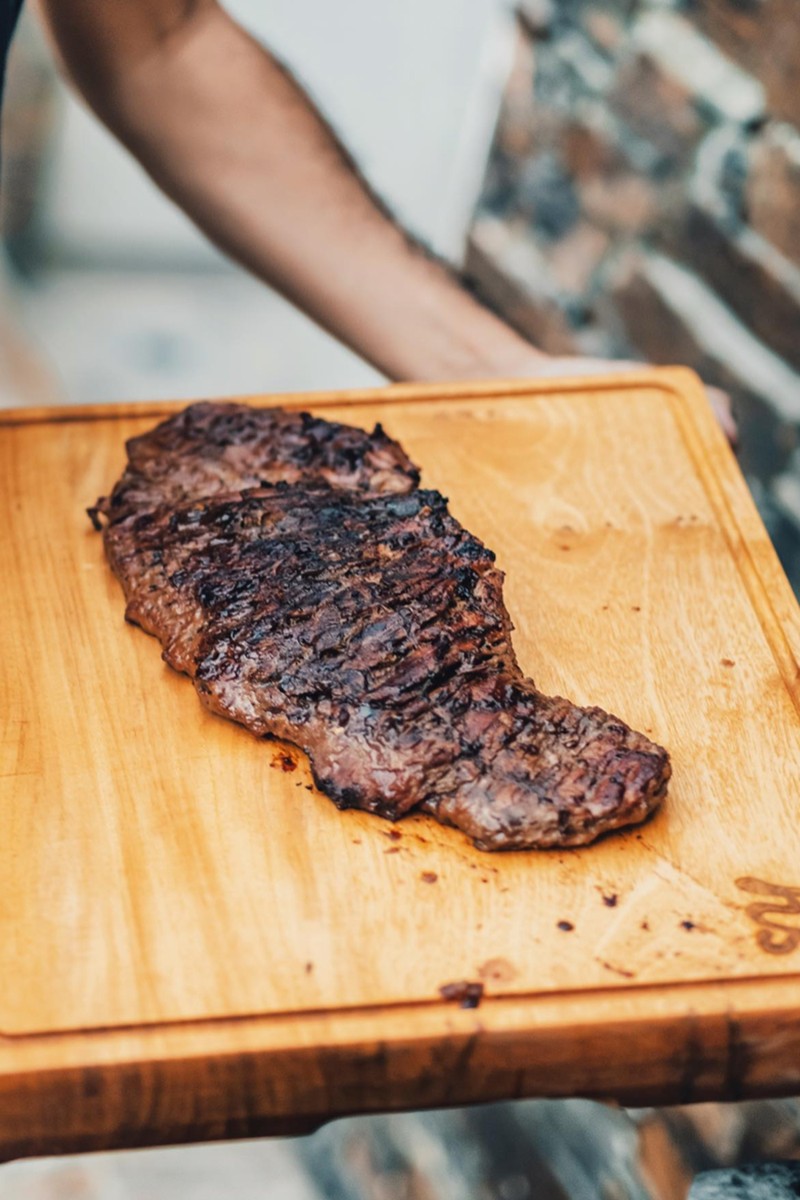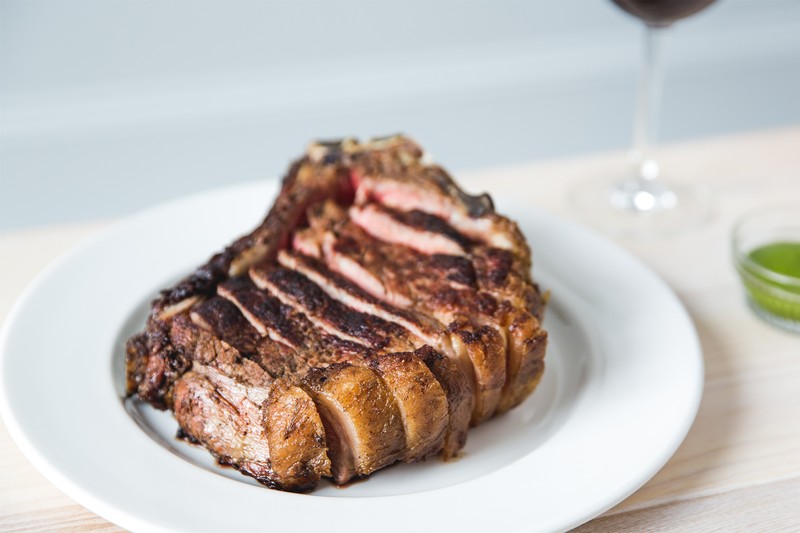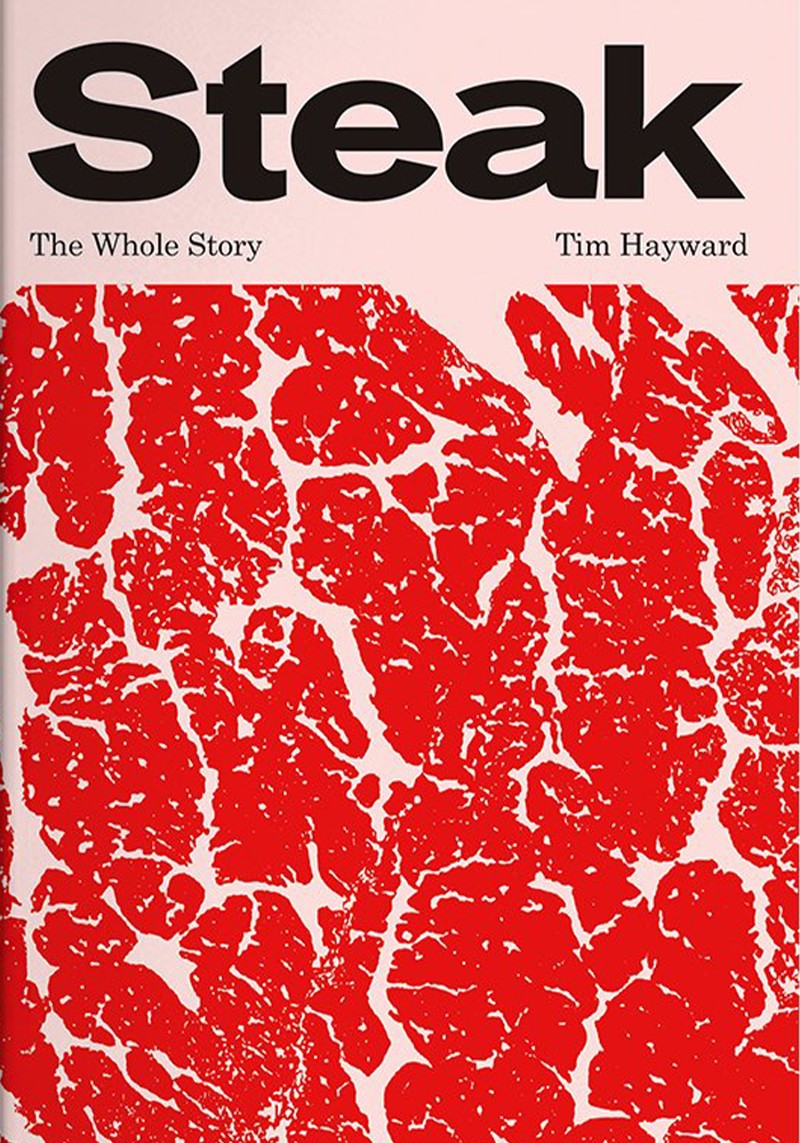Everything You Need To Know About Steak
My favourite cuts include the Fiorentina and the porterhouse, which is a big T-bone from the bottom of the animal's spine. It has the perfect ratio of meat to fat, making it a great sharing option. Both are delicious, though the Fiorentina is a great cut to ask for from your butcher if you’re cooking Italian dishes. I also love a ribeye because it's got a piece of fat in the middle which adds flavour, moisture and incredible texture.
I also like unusual cuts only butchers tend to know about. Like the ones that have got to be teased out during butchering. For example, a spider steak from inside the hip joint. It's a little web of meat that holds the top of the bone and the top of the joint together, and it's only about as big as your hand. It has a lot of interesting fat and fibrous meat, so it cooks beautifully.
My number one tip for cooking steak is to salt the meat generously before leaving it uncovered overnight in the fridge. The cold helps dry out the meat which gives you a better crust when you cook it. Then, I’ll fry it in a dry pan (good-quality steak should produce fat to cook itself in) before leaving it to rest for ten minutes.
The best thing you can do is befriend your local butcher. Most of them are pretty good cooks and have loads of experience, so they can guide you if you’re not sure what to ask for. Tell them what you’re making, and whether you have a meat thermometer, and they’ll make sure you get a great cut for a good price. Often, you’ll leave with something unexpected, like the time I was after a 4lb T-bone and left with an excellent piece of onglet.
The Gog Farm Shop is local to me in Cambridgeshire and has an excellent butcher. I also love The Art of Meat in Cambridge which always has a good selection. There’s some good steak in the supermarkets, but butchers are far more consistent and the quality will always be better. You’ll also find out what kind of animal it came from and how it’s been treated, which is important.
My kitchen always has a good Cajun seasoning, a big pot of Maldon salt and lots of tinned fish. I love Spanish and Portuguese sardines, which are delicious and so good for you. I also like to have a pot of mustard on the go, as well as plenty of brown sauce. I take out 10% of the sauce and replace it with sriracha – you’ll thank me later.
One of my favourite recipes in the book is steak Diane. It’s a classic dish that you don’t see too often these days. It’s simple with only a few ingredients, like Worcestershire sauce and plenty of button mushrooms. A dish like this is perfect with a classic martini. Steak is often fatty, bloody and strong in flavour, so you need something that cuts through that. Otherwise, a good Burgundy usually does the trick.
My death-row meal would start with fresh English crab, followed by steak frites with a martini. I’d have proper kosher Jewish pickles on one side, as well as some blue cheese sauce. Dessert would be a cheese selection, then I’d hit the red…
For great steak, visit Trattoria Sostanza in Florence. It’s a cracking restaurant with hard floors and scrubbed walls, and you have to fight your way in as it’s so popular. They serve unbelievably good steak. Closer to home, Hawksmoor is always a good option. They do a solid job without any pretentiousness.
The inspiration for this book came from a casual meal with family and friends. My friend’s son was really interested in the idea of steak tartare, so I suggested we prep and serve it at the table, old-school style. I ended up spending a month researching the history of the dish, and I really enjoyed it. I loved it so much that I sat down and wrote out the notes and recipe, which turned into the first chapter of the book. From there, I travelled all over the world, meeting various chefs and farmers – and lots of great cows – as I wanted to create a bible for all things steak.
Steak is universally loved, and everyone has a memory of enjoying their first one. When you start asking people, ‘What was steak like in your family?’, they usually say something like, ‘I remember when dad used to take us to a Berni Inn,’ or, ‘I remember the first time we went to an Angus Steakhouse.’ Restaurants have come a long way since then, but the best steak is the one that’s served simply.
Ready to get in the kitchen? Here are three of Tim’s recipes to try…

Steak Tartare
Yes, steak tartare is all about the superb flavour of the well-reared beef but, done right, it’s also a tribute to all those waiters, in all those steakhouses, who’ve created so much of the lore and legend around steak, and maybe even a connection to our most primitive, innate and elemental attraction to good meat.
Half an hour before you want to eat, put the meat into the freezer. Once thoroughly chilled and firm, you’ll be able to slice and dice it much finer. Cut it into small dices, then go over the pile several times with the knife until the meat is effectively minced. Some modern presentations of steak tartare invoke chunky diced meat, which is all very well but a long way from tradition.
Put the anchovies, capers and gherkins into a bowl and smush to a paste with the side of a knife, then whisk in the egg yolks and mustard. Slowly drizzle in the olive oil, whisking in as you go, until the mixture is stiff, then add the lemon juice, salt and pepper to taste.
Add the meat, shallot and parsley and combine thoroughly, tossing the ingredients like a salad. Add Tabasco and Worcestershire sauce to taste (in my case, a lot).
Modern brasserie practise is to serve tartare with fries, but I’m a sucker for originality, so I stick with toast.

The Ultimate Steak Sandwich
Pour the wine and oil into a non-reactive bowl and add the balsamic vinegar, onion, garlic and oregano. Season with salt and pepper, and chilli flakes.
Cut the steak into thick fingers across the grain and add to the marinade. Cover and leave to marinate overnight in the fridge.
The next day, heat a dry cast-iron frying pan over a high heat until it’s as hot as you can get it, and sear one side of each slice of bread. Rub the seared side with a clove of garlic if you like.
Lift the meat out of the marinade and pat dry with paper towels, then sear on all sides in the hot pan, rolling and shaking to ensure an even char, until the core reaches 54°C on a probe thermometer. Remove from the pan and set aside to reset.
Pour the marinade and onions into the hot pan and scrape up any baked-on meat juices. Reduce the heat to a vigorous simmer and cook until everything is well reduced and the onions are softened. Add the cream, if using, and allow it the bubble.
Toss the rested meat into the sauce along with any juices. Spread the grilled sides of the bread with mustard and horseradish, then spoon the meat and onions on top.
Add a little more of the sauce, spread over the lettuce leaves, and nail on the lid with cocktail sticks. Serve with any leftover sauce for dipping.

Veal Milanese
A Milanese is a cutlet that has been beaten out but left on the bone, creating a convenient handle. It’s also worth mentioning that it should be absolutely huge, hanging over the edges of a larger plate, which is a more recent Italian restaurant tradition. Some – and I must stress here only some – Italian cooks add parmesan or pecorino to the breadcrumbs.
Place the cutlet between two pieces of greaseproof or butcher’s paper and pound with a flat mallet or the bottom of a heavy pan until 0.5-1cm thick. Look carefully at the beaten cutlet and, if it looks like there’s any tightening around the outside edge where a membrane may be pulling inwards, just make a neat snip through the edge in a couple of places. This will stop the cutlet rolling up when it’s cooked. Season generously with salt and pepper.
Spread the flour on a plate and dip both sides of the beaten cutlet into it. Flip several times, patting to achieve good coverage and adherence.
Pour the egg into a shallow dish and put the breadcrumbs onto a plate.
Dip the floured cutlet in the egg so both sides are fully coated, then lay it on the plate of breadcrumbs. Flip to coat both sides, but don’t push the breadcrumbs into the meat to make more stick. Compressing the breadcrumbs makes the crust denser.
Heat half the butter in a cast-iron frying pan over a medium-high heat and fry one side until the cutlet is golden, then add the remaining butter. Flip the cutlet and continue to cook, flipping occasionally, until both sides are equally golden brown. Don’t be afraid to add more butter at this point.
Serve with slices of fresh tomato dressed in olive oil and balsamic vinegar, and sprinkle with chopped onions. Some restaurants would serve this with a simple tomato sauce dolloped on top to ‘cut through’ the butter, but why on earth would you do that? You could compromise, perhaps, with a small serving of pasta tossed in a tomato sauce.
Steak: The Whole Story by Tim Hayward (published by Quadrille, £30) is out now. Visit Amazon.co.uk
All products on this page have been selected by our editorial team, however we may make commission on some products.
DISCLAIMER: We endeavour to always credit the correct original source of every image we use. If you think a credit may be incorrect, please contact us at [email protected].





